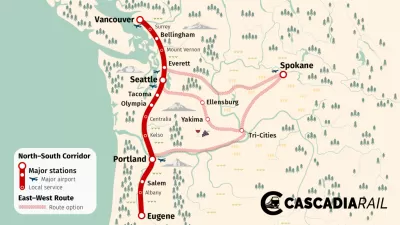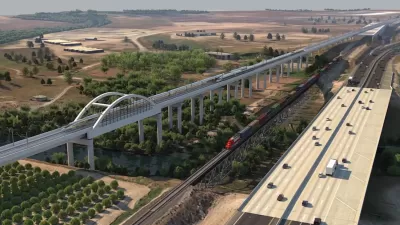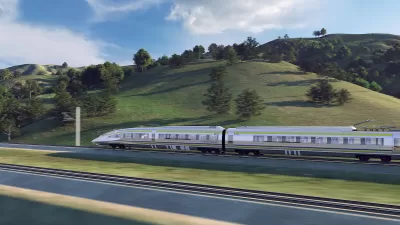The New York Times recently checked in with the California High-Speed Rail project and reported the current details, still in the process of a long evolution.

Jill Cowan writes for the New York Times to describe the California High-Speed Rail project at a "crossroads": 1,000 workers are currently employed in the state's Central Valley building along 119 miles or right away, but the project is inching along compared to its high-speed ambitions. State voters approved a $10 bond in 2008 and the project broke ground in 2015, and planning for the project goes much further back into history. The California High-Speed Rail Authority was established in 1996, for instance.
The premise of Cowan's article, given how much time has elapsed and the relatively inconspicuous signs of the project's development along Highway 99: "many California residents have long since lost track of what is being built where, and when or if it will ever be completed."
"In 2008, when the bond measure passed, the project symbolized the state’s ambition to build and think big," writes Cowan. "But in the years since then, the project has become something else: an alarming vision of a nation that seems incapable of completing the transformative projects necessary to confront 21st century challenges."
As noted in the article, the Biden administration is pushing the approval of the federal Infrastructure Investment and Jobs Act as signs of a coming "infrastructure decade." The California High-Speed Rail promises nothing more, at this point in the history detailed in the source article below, than to be one of the toughest tests of that ambition.
FULL STORY: California’s Ambitious High-Speed Rail at a Crossroads

Maui's Vacation Rental Debate Turns Ugly
Verbal attacks, misinformation campaigns and fistfights plague a high-stakes debate to convert thousands of vacation rentals into long-term housing.

Planetizen Federal Action Tracker
A weekly monitor of how Trump’s orders and actions are impacting planners and planning in America.

In Urban Planning, AI Prompting Could be the New Design Thinking
Creativity has long been key to great urban design. What if we see AI as our new creative partner?

King County Supportive Housing Program Offers Hope for Unhoused Residents
The county is taking a ‘Housing First’ approach that prioritizes getting people into housing, then offering wraparound supportive services.

Researchers Use AI to Get Clearer Picture of US Housing
Analysts are using artificial intelligence to supercharge their research by allowing them to comb through data faster. Though these AI tools can be error prone, they save time and housing researchers are optimistic about the future.

Making Shared Micromobility More Inclusive
Cities and shared mobility system operators can do more to include people with disabilities in planning and operations, per a new report.
Urban Design for Planners 1: Software Tools
This six-course series explores essential urban design concepts using open source software and equips planners with the tools they need to participate fully in the urban design process.
Planning for Universal Design
Learn the tools for implementing Universal Design in planning regulations.
planning NEXT
Appalachian Highlands Housing Partners
Mpact (founded as Rail~Volution)
City of Camden Redevelopment Agency
City of Astoria
City of Portland
City of Laramie





























